Date: 01-07-2024
A Brief Overview of Augmented Reality
What is Augmented Reality?
Augmented Reality (AR) is a technology that overlays digital data—like pictures, movies, or three-dimensional models—onto the actual environment. Augmented Reality (AR) improves the physical world by incorporating layers of digital content, as contrast to Virtual Reality (VR), which submerges viewers in a fully virtual environment.
Development of AR in Advertising
From a curiosity to a commonplace technology, augmented reality has changed many industries, including marketing. Because AR can produce immersive and interactive experiences, it has become widely used in marketing efforts after being made popular by entertainment and gaming apps.
Augmented Reality's Advantages for Mobile Marketing
- Enhanced Engagement: By offering engaging experiences that merge the digital and real worlds, augmented reality enthralls consumers. Longer user interactions and higher brand memory are the results of this improved engagement.
- Tailored Experiences: Augmented Reality (AR) enables companies to customize material according to user preferences and actions, resulting in marketing messages that are relevant to specific customers.
- Competitive Advantage: Companies can set themselves apart from rivals and establish their brands as cutting-edge leaders in their respective sectors by implementing AR early on.
Augmented Reality Uses in Mobile Marketing
Improving Interaction with Customers
With the use of augmented reality, marketers can produce engaging experiences that draw consumers in. Retailers can utilize augmented reality (AR) to enable customers to view products in their own settings prior to making a purchase.
Raising Awareness of the Brand
When people share their augmented experiences on social media, augmented reality advertisements have the potential to go viral and create interest. This kind of word-of-mouth advertising draws in new clients and raises brand exposure.
Boosting Conversions and Sales
Through the use of virtual try-ons, interactive product demos, and immersive storytelling, augmented reality (AR) may make shopping more frictionless. These characteristics raise conversion rates and lower obstacles to buying.
Using Augmented Reality in Mobile Marketing Initiatives
How to Include Augmented Reality in Your Strategy
- Define Objectives: Determine the precise marketing objectives, like raising engagement or boosting sales, that augmented reality can assist in achieving.
- Select AR Use Cases: Choose augmented reality (AR) experiences that complement your brand and appeal to your intended market. Take into account interactive product demos, virtual tours, and games that use augmented reality.
- Develop AR Material: Work with AR developers to provide engaging material that reflects your brand's values and offers users value.
- Promote Your AR Campaign: To advertise your AR experiences and increase reach, make use of a variety of channels, such as influencer collaborations, email marketing, and social media.
Case Studies: Effective AR Initiatives
The IKEA Place App
IKEA released the IKEA Place app, which lets consumers see furniture in their homes using augmented reality before making a purchase. Online sales have increased and customer engagement has been greatly increased by this engaging experience.
Pokémon GO as an Example
By utilizing augmented reality to bring Pokémon characters into the real world, Pokémon GO transformed smartphone gaming. The popularity of the game demonstrates AR's ability to produce social and immersive experiences that draw in millions of users globally.
AR Resources and Interfaces
Top Tools for AR Development
- ARKit (iOS): Utilizing capabilities like motion tracking and environmental awareness, Apple's ARKit offers resources and tools for creating augmented reality applications on iOS devices.
- ARCore (Android): With features like motion tracking, environmental awareness, and light estimation, Google's ARCore lets developers create augmented reality experiences for Android smartphones.
Selecting the Best AR Platform for Your Marketing Initiative
When choosing an AR platform for your marketing campaign, take into account elements like target audience preferences, platform compatibility, and development difficulty. Examine each platform's features and assistance to make sure they align with the goals of your brand.
AR Trends and Prospects
New Developments in AR Technology Trends
- Wearables and AR Glasses: It is anticipated that the advancement of AR glasses and wearables will open up new applications for hands-free AR experiences in industries including retail, healthcare, and education.
- AR in Social Media: Through interactive filters, lenses, and AR-enabled ads, social media platforms like Snapchat and Instagram are incorporating augmented reality capabilities to improve user engagement.
Future Forecasts for Augmented Reality in Marketing
- Increased Adoption: Due to technological improvements and customer demand for interactive experiences, augmented reality (AR) is expected to become a common element of marketing efforts across industries.
- Enhanced Personalization: Augmented reality (AR) will allow marketers to offer highly customized marketing content that adjusts to each person's tastes and actions, creating stronger bonds with customers.
Case Studies: Effective AR Implementations
AR in MVP Development Services
Using augmented reality (AR), an MVP development services company produced virtual prototypes of new product features that stakeholders could view and comment on in real time. As a result, the development process was expedited and the time to market for new MVPs was shortened.
Augmented Reality in Restaurant App Development Services
In order to give customers engaging menu experiences, a restaurant app development services provider included augmented reality into its mobile app. Through AR-powered films, customers may examine nutritional information, watch 3D models of dishes, and even watch chef demonstrations.
Selecting an Appropriate AR Development Partner
Elements to Consider When Choosing an AR Development Firm
- Expertise and Experience: Seek a development partner with a track record of successfully developing augmented reality applications for a variety of sectors.
- Technological Proficiency: Evaluate the organization's knowledge of platforms, tools, and upcoming technologies for AR development.
- Client References: To determine if a company is successful in delivering augmented reality solutions that match business objectives, ask for client references and case studies.
- Collaborative Approach: To build memorable augmented reality experiences, select a partner who has the same vision as your business and works closely with your team.
Final Thoughts
Businesses have a revolutionary chance to reinvent client connection and improve their mobile marketing tactics with augmented reality. Businesses may generate immersive experiences that enthrall audiences, foster brand loyalty, and eventually boost income by utilizing AR. Businesses, especially restaurant app development services and MVP development services in India, should embrace innovation and use augmented reality (AR) to stay ahead of the competition as the technology develops.
Frequently Asked Questions
- How may AR help India's MVP development services? AR can speed up development cycles and improve stakeholder collaboration by enabling MVP development teams to visualize and iterate on product features in real time through interactive prototyping.
- What benefits come with utilizing augmented reality in restaurant app development services? By offering interactive menu displays, virtual tours of restaurant spaces, and tailored recommendations based on patron interests, augmented reality (AR) can improve the dining experience and increase patron satisfaction and loyalty.
- Which sectors are most likely to use augmented reality in marketing? AR is being used more and more by sectors including retail, real estate, healthcare, and the automobile industry to create immersive marketing experiences that increase engagement, sales, and brand distinctiveness.
Through the use of Augmented Reality into mobile marketing tactics, companies can seize novel avenues for meaningful and inventive customer connections. Including augmented reality (AR) in your marketing toolset can help you achieve measurable business goals and differentiate your company in a crowded market, whether you're looking at using AR for
A Brief Overview of Augmented Reality
What is Augmented Reality?
Augmented Reality (AR) is a technology that overlays digital data—like pictures, movies, or three-dimensional models—onto the actual environment. Augmented Reality (AR) improves the physical world by incorporating layers of digital content, as contrast to Virtual Reality (VR), which submerges viewers in a fully virtual environment.
Development of AR in Advertising
From a curiosity to a commonplace technology, augmented reality has changed many industries, including marketing. Because AR can produce immersive and interactive experiences, it has become widely used in marketing efforts after being made popular by entertainment and gaming apps.
Augmented Reality's Advantages for Mobile Marketing
- Enhanced Engagement: By offering engaging experiences that merge the digital and real worlds, augmented reality enthralls consumers. Longer user interactions and higher brand memory are the results of this improved engagement.
- Tailored Experiences: Augmented Reality (AR) enables companies to customize material according to user preferences and actions, resulting in marketing messages that are relevant to specific customers.
- Competitive Advantage: Companies can set themselves apart from rivals and establish their brands as cutting-edge leaders in their respective sectors by implementing AR early on.
Augmented Reality Uses in Mobile Marketing
Improving Interaction with Customers
With the use of augmented reality, marketers can produce engaging experiences that draw consumers in. Retailers can utilize augmented reality (AR) to enable customers to view products in their own settings prior to making a purchase.
Raising Awareness of the Brand
When people share their augmented experiences on social media, augmented reality advertisements have the potential to go viral and create interest. This kind of word-of-mouth advertising draws in new clients and raises brand exposure.
Boosting Conversions and Sales
Through the use of virtual try-ons, interactive product demos, and immersive storytelling, augmented reality (AR) may make shopping more frictionless. These characteristics raise conversion rates and lower obstacles to buying.
Using Augmented Reality in Mobile Marketing Initiatives
How to Include Augmented Reality in Your Strategy
- Define Objectives: Determine the precise marketing objectives, like raising engagement or boosting sales, that augmented reality can assist in achieving.
- Select AR Use Cases: Choose augmented reality (AR) experiences that complement your brand and appeal to your intended market. Take into account interactive product demos, virtual tours, and games that use augmented reality.
- Develop AR Material: Work with AR developers to provide engaging material that reflects your brand's values and offers users value.
- Promote Your AR Campaign: To advertise your AR experiences and increase reach, make use of a variety of channels, such as influencer collaborations, email marketing, and social media.
Case Studies: Effective AR Initiatives
The IKEA Place App
IKEA released the IKEA Place app, which lets consumers see furniture in their homes using augmented reality before making a purchase. Online sales have increased and customer engagement has been greatly increased by this engaging experience.
Pokémon GO as an Example
By utilizing augmented reality to bring Pokémon characters into the real world, Pokémon GO transformed smartphone gaming. The popularity of the game demonstrates AR's ability to produce social and immersive experiences that draw in millions of users globally.
AR Resources and Interfaces
Top Tools for AR Development
- ARKit (iOS): Utilizing capabilities like motion tracking and environmental awareness, Apple's ARKit offers resources and tools for creating augmented reality applications on iOS devices.
- ARCore (Android): With features like motion tracking, environmental awareness, and light estimation, Google's ARCore lets developers create augmented reality experiences for Android smartphones.
Selecting the Best AR Platform for Your Marketing Initiative
When choosing an AR platform for your marketing campaign, take into account elements like target audience preferences, platform compatibility, and development difficulty. Examine each platform's features and assistance to make sure they align with the goals of your brand.
AR Trends and Prospects
New Developments in AR Technology Trends
- Wearables and AR Glasses: It is anticipated that the advancement of AR glasses and wearables will open up new applications for hands-free AR experiences in industries including retail, healthcare, and education.
- AR in Social Media: Through interactive filters, lenses, and AR-enabled ads, social media platforms like Snapchat and Instagram are incorporating augmented reality capabilities to improve user engagement.
Future Forecasts for Augmented Reality in Marketing
- Increased Adoption: Due to technological improvements and customer demand for interactive experiences, augmented reality (AR) is expected to become a common element of marketing efforts across industries.
- Enhanced Personalization: Augmented reality (AR) will allow marketers to offer highly customized marketing content that adjusts to each person's tastes and actions, creating stronger bonds with customers.
Case Studies: Effective AR Implementations
AR in MVP Development Services
Using augmented reality (AR), an MVP development services company produced virtual prototypes of new product features that stakeholders could view and comment on in real time. As a result, the development process was expedited and the time to market for new MVPs was shortened.
Augmented Reality in Restaurant App Development Services
In order to give customers engaging menu experiences, a restaurant app development services provider included augmented reality into its mobile app. Through AR-powered films, customers may examine nutritional information, watch 3D models of dishes, and even watch chef demonstrations.
Selecting an Appropriate AR Development Partner
Elements to Consider When Choosing an AR Development Firm
- Expertise and Experience: Seek a development partner with a track record of successfully developing augmented reality applications for a variety of sectors.
- Technological Proficiency: Evaluate the organization's knowledge of platforms, tools, and upcoming technologies for AR development.
- Client References: To determine if a company is successful in delivering augmented reality solutions that match business objectives, ask for client references and case studies.
- Collaborative Approach: To build memorable augmented reality experiences, select a partner who has the same vision as your business and works closely with your team.
Final Thoughts
Businesses have a revolutionary chance to reinvent client connection and improve their mobile marketing tactics with augmented reality. Businesses may generate immersive experiences that enthrall audiences, foster brand loyalty, and eventually boost income by utilizing AR. Businesses, especially restaurant app development services and MVP development services in India, should embrace innovation and use augmented reality (AR) to stay ahead of the competition as the technology develops.
Frequently Asked Questions
- How may AR help India's MVP development services? AR can speed up development cycles and improve stakeholder collaboration by enabling MVP development teams to visualize and iterate on product features in real time through interactive prototyping.
- What benefits come with utilizing augmented reality in restaurant app development services? By offering interactive menu displays, virtual tours of restaurant spaces, and tailored recommendations based on patron interests, augmented reality (AR) can improve the dining experience and increase patron satisfaction and loyalty.
- Which sectors are most likely to use augmented reality in marketing? AR is being used more and more by sectors including retail, real estate, healthcare, and the automobile industry to create immersive marketing experiences that increase engagement, sales, and brand distinctiveness.
Through the use of Augmented Reality into mobile marketing tactics, companies can seize novel avenues for meaningful and inventive customer connections. Including augmented reality (AR) in your marketing toolset can help you achieve measurable business goals and differentiate your company in a crowded market, whether you're looking at using AR for
Your choice of weapon
Build your Apps for any Platform
We to code. It's our passion
We are passionate about what we do and love to keep ourselves posted with new technologies stacks. Here are a few technologies that keep us hooked:


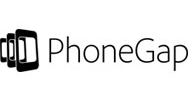
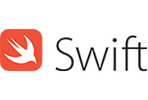
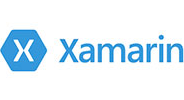
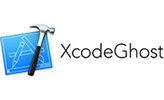

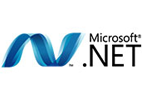


While we are good with SOS signals,
you can also reach us at our given
email address or phone number.
you can also reach us at our given
email address or phone number.




